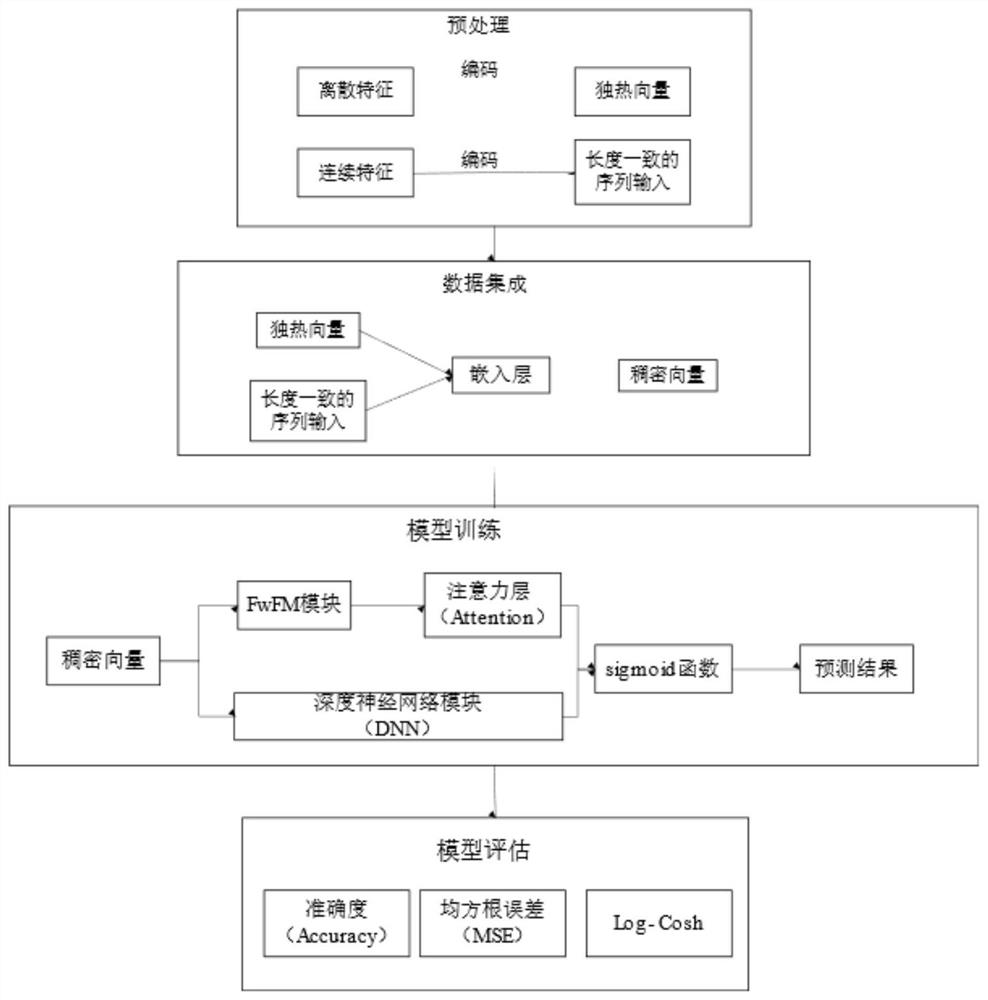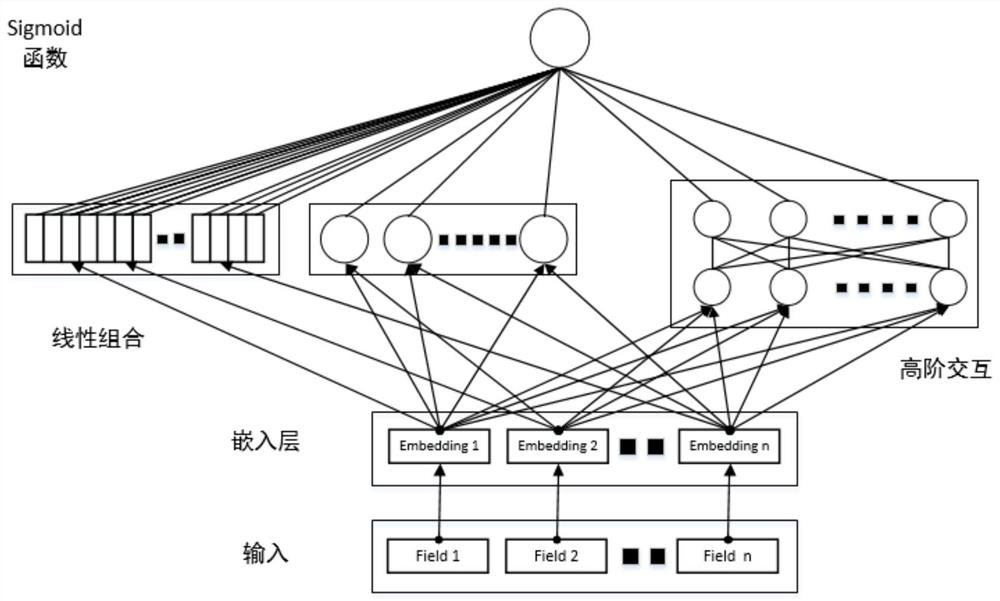Movie click rate estimation method based on domain interaction information intensity factor decomposition machine
A technology of strength factor and interactive information, applied in the field of recommendation system
- Summary
- Abstract
- Description
- Claims
- Application Information
AI Technical Summary
Problems solved by technology
Method used
Image
Examples
Embodiment Construction
[0054] The present invention will be further elaborated below by describing a preferred specific embodiment in detail in conjunction with the accompanying drawings.
[0055] Such as figure 1 As shown, it is a movie click-through rate estimation method based on domain interactive information intensity factorization machine of the present invention, which can process Movielens public data set data, model user characteristic information, movie category characteristics and other information according to the present invention, and Based on domain interaction information, the interaction between features is considered, and then the click rate is estimated.
[0056] Specifically, the method for establishing the model includes: S1. Selecting a data set as a data sample, performing a preprocessing operation on the data sample, and dividing the preprocessed data sample into a training set and a testing set.
[0057] Specifically, in this embodiment, the Movielens-1M dataset is selected...
PUM
 Login to View More
Login to View More Abstract
Description
Claims
Application Information
 Login to View More
Login to View More - R&D
- Intellectual Property
- Life Sciences
- Materials
- Tech Scout
- Unparalleled Data Quality
- Higher Quality Content
- 60% Fewer Hallucinations
Browse by: Latest US Patents, China's latest patents, Technical Efficacy Thesaurus, Application Domain, Technology Topic, Popular Technical Reports.
© 2025 PatSnap. All rights reserved.Legal|Privacy policy|Modern Slavery Act Transparency Statement|Sitemap|About US| Contact US: help@patsnap.com



